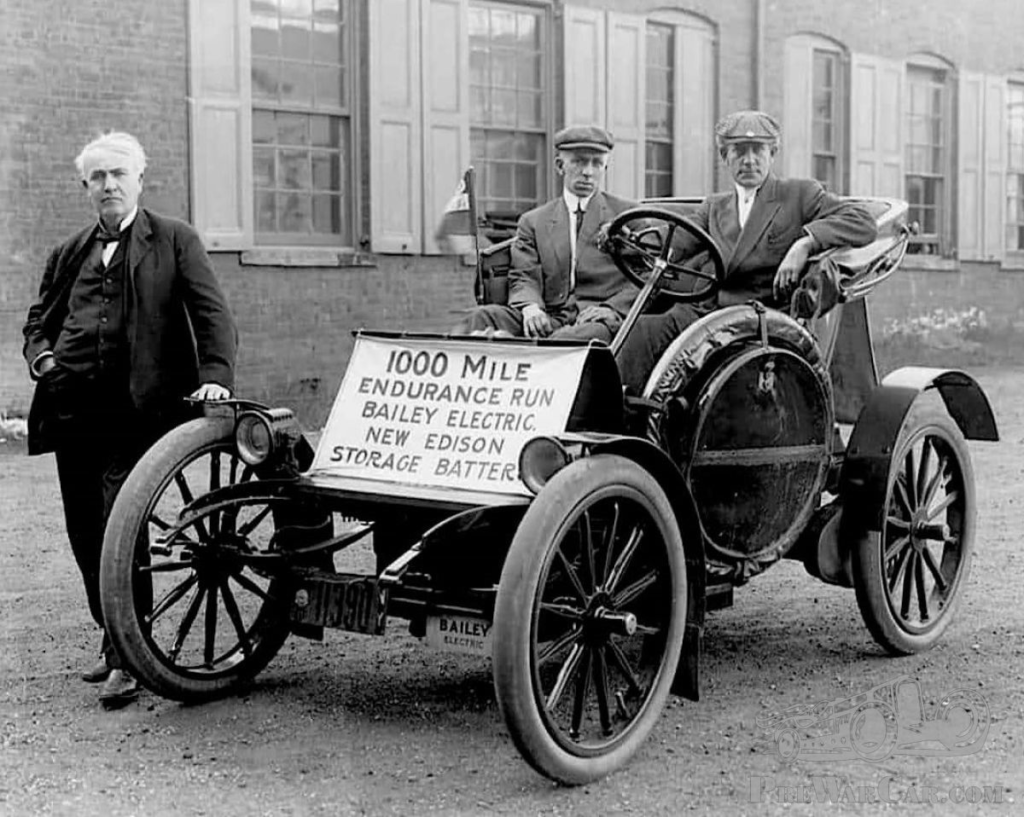About 120 years ago, Thomas Edison invented a battery that not only powered his electric car but also produced hydrogen. His electric battery was a nickel-iron battery, not the lead-acid battery that others were using. In the early 1900’s, electric cars were not a novelty in Mr. Edison’s neighborhood, but most of them relied on heavy and cumbersome lead-acid batteries.
Swedish inventor Ernst Waldemar Junger, first patented a nickel-iron battery in 1899. Edison developed and refined a battery based on Junger’s work, in hopes his design would soon be powering other vehicles throughout the country.
Edison’s nickel-iron battery was more resilient and could charge twice as fast as lead-acid batteries. He even obtained a deal with Ford Motors to produce electric vehicles with his battery design, but it did not work out. Ford Motors moved in favor of gasoline powered vehicles as they could go longer distances before needing to refuel or recharge, even though they were slower.
The nickel-iron battery had problems; it was larger than the more widely used lead-acid batteries, and more expensive. When the battery was charging, it would release hydrogen, which was a nuisance, and could be dangerous. Today, hydrogen is useful and capitalized.
Conventional batteries, like lithium-ion, can store energy in the short-term. But when fully charged, they must release any excess energy, or they can overheat and degrade. The nickel-iron battery, however, remains stable when fully charged. When overcharged, it produces hydrogen and oxygen, also called a battolyzer, when operating in this mode. Other useful characteristics of the nickel-iron battery are its limited maintenance, durability, and its low-cost relative to the lithium-ion battery. Nickel and iron are readily available, compared to cobalt and lithium, which are in conventional batteries.
Today, the largest battolyzer is 15kW/15kWh, and has enough battery capacity and long-term hydrogen storage to power one and a half households. However, a larger version, 30kW/30kWh is in the works at the Magnum power station in Eemshaven in the Netherlands. It will provide enough hydrogen to satisfy the needs of the power station. Once rigorous testing of the larger version is satisfied, the aim is to scale-up and distribute the battolyzer to green energy producers, such as solar and wind farms. Ultimately, the battolyzer’s proponents hope it will reach gigawatt-scale, equivalent to the power generated by about 400 utility scale wind turbines. However, smaller battolyzers can supply energy for mini grids used by remote communities that do not live on main power grids.
There are hurdles to overcome in terms of efficiency and capacity. The potential of the battolyzer has been hiding in plain sight, ever since Thomas Edison first began experimenting with his nickel-iron battery at the turn of the 20th Century. He may have been wrong in believing his battery would supplant the other vehicles on the road. But the nickel-iron battery may yet play a role in our transition to net-zero.




